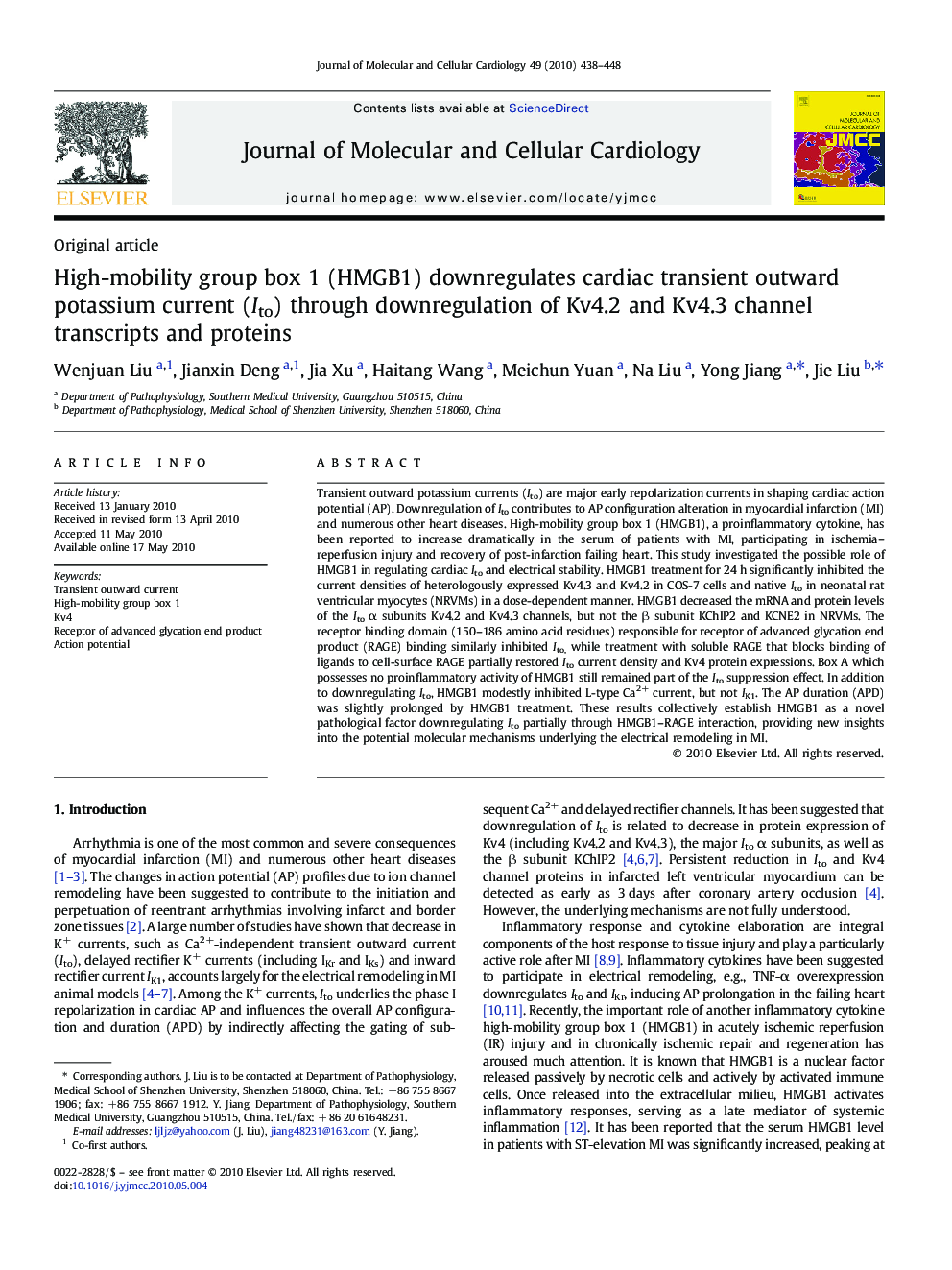| Article ID | Journal | Published Year | Pages | File Type |
|---|---|---|---|---|
| 2191018 | Journal of Molecular and Cellular Cardiology | 2010 | 11 Pages |
Transient outward potassium currents (Ito) are major early repolarization currents in shaping cardiac action potential (AP). Downregulation of Ito contributes to AP configuration alteration in myocardial infarction (MI) and numerous other heart diseases. High-mobility group box 1 (HMGB1), a proinflammatory cytokine, has been reported to increase dramatically in the serum of patients with MI, participating in ischemia–reperfusion injury and recovery of post-infarction failing heart. This study investigated the possible role of HMGB1 in regulating cardiac Ito and electrical stability. HMGB1 treatment for 24 h significantly inhibited the current densities of heterologously expressed Kv4.3 and Kv4.2 in COS-7 cells and native Ito in neonatal rat ventricular myocytes (NRVMs) in a dose-dependent manner. HMGB1 decreased the mRNA and protein levels of the Ito α subunits Kv4.2 and Kv4.3 channels, but not the β subunit KChIP2 and KCNE2 in NRVMs. The receptor binding domain (150–186 amino acid residues) responsible for receptor of advanced glycation end product (RAGE) binding similarly inhibited Ito, while treatment with soluble RAGE that blocks binding of ligands to cell-surface RAGE partially restored Ito current density and Kv4 protein expressions. Box A which possesses no proinflammatory activity of HMGB1 still remained part of the Ito suppression effect. In addition to downregulating Ito, HMGB1 modestly inhibited L-type Ca2+ current, but not IK1. The AP duration (APD) was slightly prolonged by HMGB1 treatment. These results collectively establish HMGB1 as a novel pathological factor downregulating Ito partially through HMGB1–RAGE interaction, providing new insights into the potential molecular mechanisms underlying the electrical remodeling in MI.
